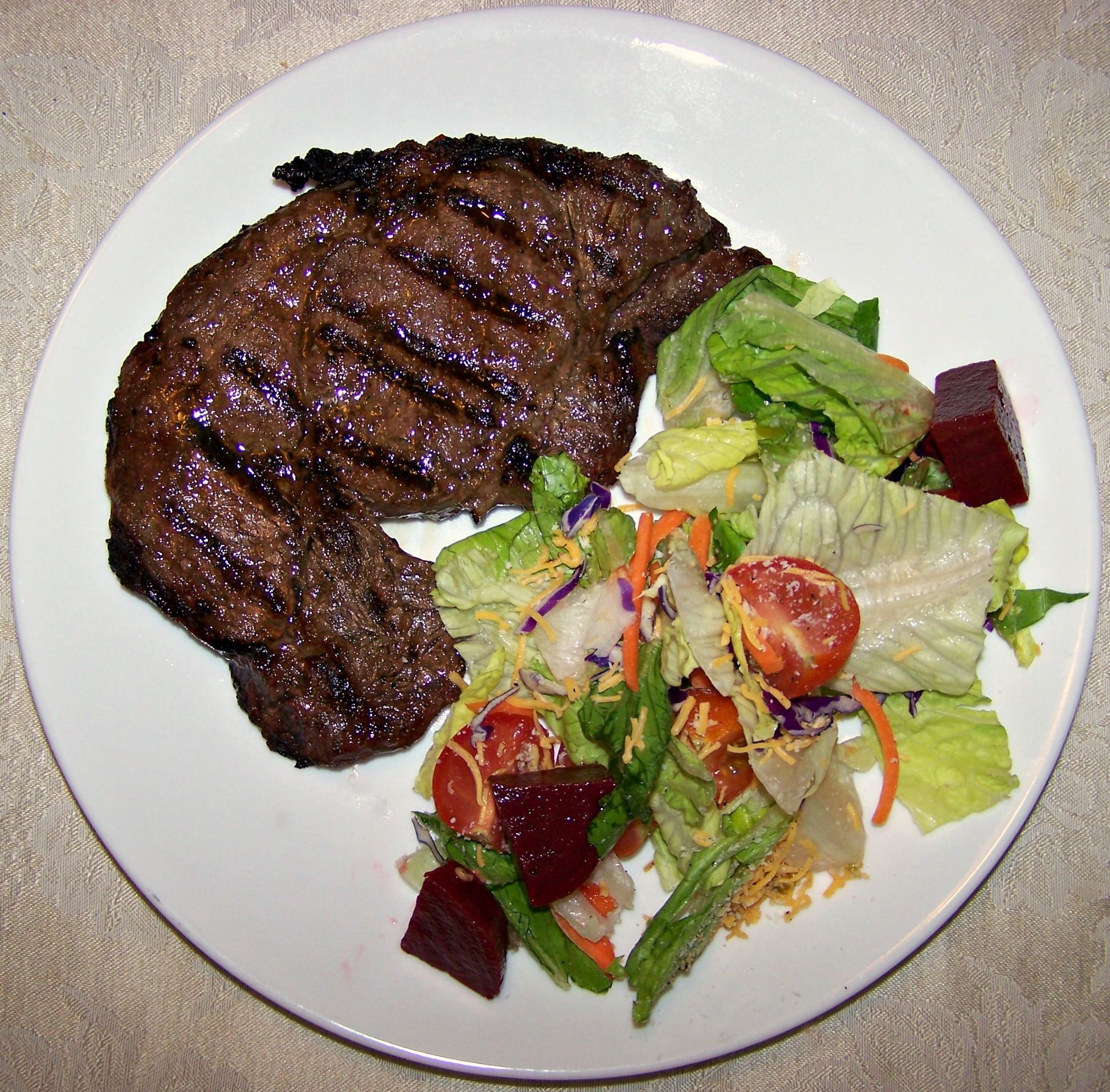
The meat we eat largely consists of proteins, which are made up of amino acids.
Proteins may be broken down into amino acids – and, amino acids may be built up into proteins.
Consider the basic structure of amino acids and proteins.
Amino Acid = Amine + Carboxylic Acid
Amino acids contain an amino group, an acid group, and an alkyl group.
In an amino group, there is one trivalent nitrogen atom, which is attached to two hydrogen atoms. We write out an amino group as –NH2.
An amino acid also contains a carboxylic acid group. It is written –COOH, that is, it contains one tetravalent carbon atom that is double-bonded to an oxygen atom, and also it is single-bonded to one hydroxyl group,
–OH.
Now let’s call the thing that the –NH2 group and the –COOH group are attached to, an alkyl group, symbolized by the letter R. We then write our generic amino acid,
H2N-R-COOH
Now R can be any number of things. This is important, because there are dozens of amino acids. Let’s identify two of them as having the alkyl groups R1 and R2.
Salt Formation Followed by Dehydration
Now we want to join these groups together to form a protein-like structure. The first step is the formation of an ionic organic salt. First, we write,
H2N-R1-COOH + H2N-R2-COOH → H2N-R1-COO–H3N+-R2-COOH
Notice at first there is only one product, the organic salt. The salt contains electrical charges. There is a negative charge on the carboxylic group and a positive charge on the amino group.
Next, we write the second step, dehydration:
H2N-R1-COO–H3N+-R2-COOH → H2N-R1-CON(H)-R2-COOH + H2O
The dehydration forms a non-ionic amide linkage. In the laboratory, we often use heat to convert an amine carboxylic salt into an amide. It is the so-called peptide linkage –CONH– that characterizes a protein.
A few examples of common amino acids are glycine, histidine, leucine, alanine, arginine, tyrosine and tryptophan. There are many others. When writing the makeup of a protein, of which there are hundreds and hundreds of varieties, the amino acid constituents are frequently symbolized for simplicity, rather than written. The series of symbols is referred to as the peptide sequence. The abbreviations for the amino acids listed above are Gly, His, Leu, Ala, Arg, Tyr and Trp.
If the sequence was glycine, then histidine, then leucine, the structure would be abbreviated Gly-His-Leu.
One Final Point – the Zwitterion
Let’s briefly consider one final point concerning amino acids. At times, they exist in so-called zwitterion form. The word zwitterion comes from the German and refers to a dipolar ion – that is a species that can be either a neutral molecule or a species with a positive ionic charge plus a negative ionic charge. Thus, glycine can assume the structure,
H2N-CH2-COOH
or the structure,
H3N+-CH2-COO–
Tenderizing – Hydrolysis of Proteins to Amino Acids
Ever bought a tough cut of meat and the purveyor suggested marinating the meat? The suggestion to do so usually involves the use of vinegar or lemon juice, although sometimes we use enzymes to tenderize meat. Some of the peptide linkages split apart in the acidic environment. To some degree, protein breaks apart to produce amino acids. The meat is tender; the consumer is satisfied; the purveyor is happy.
Note: You might also enjoy Was Mom Right? Is Eating Carrots Good for the Eyes?
References:
- The University of Arizona: The Chemistry of Amino Acids
- Michigan State University: Peptides and Proteins
- University of Utah: Dipole-Bound Anions of Glycine Based on the Zwitterion and Neutral Structures
← Back to Food and Health
← Home